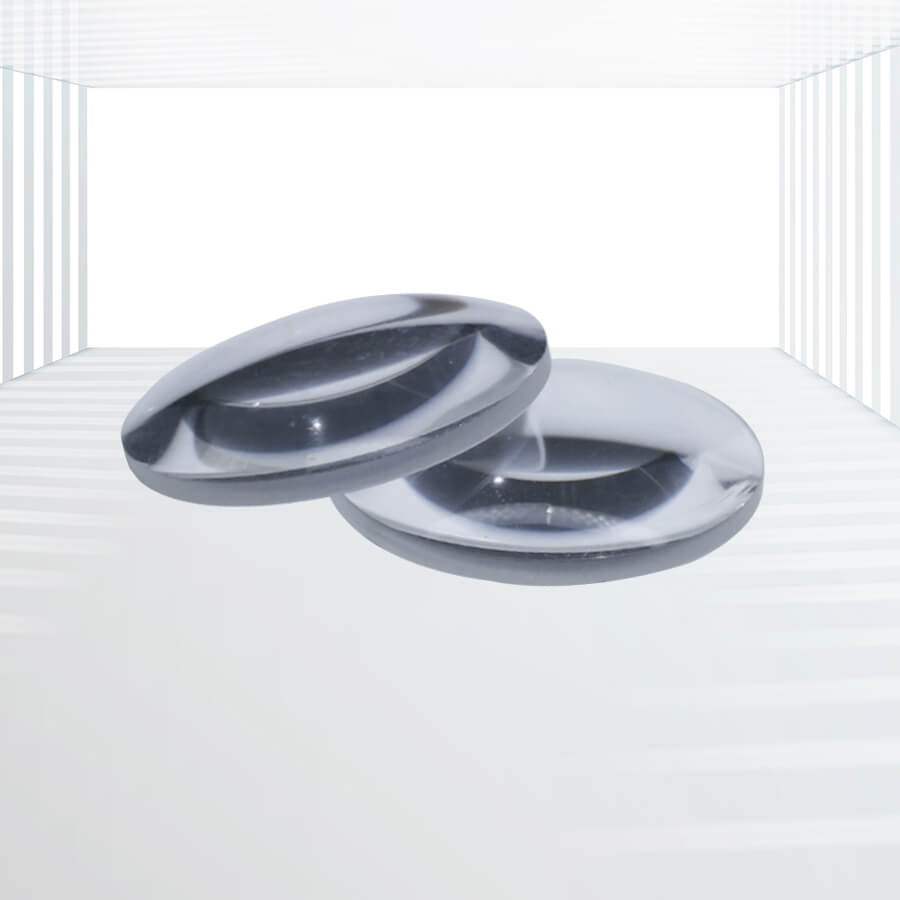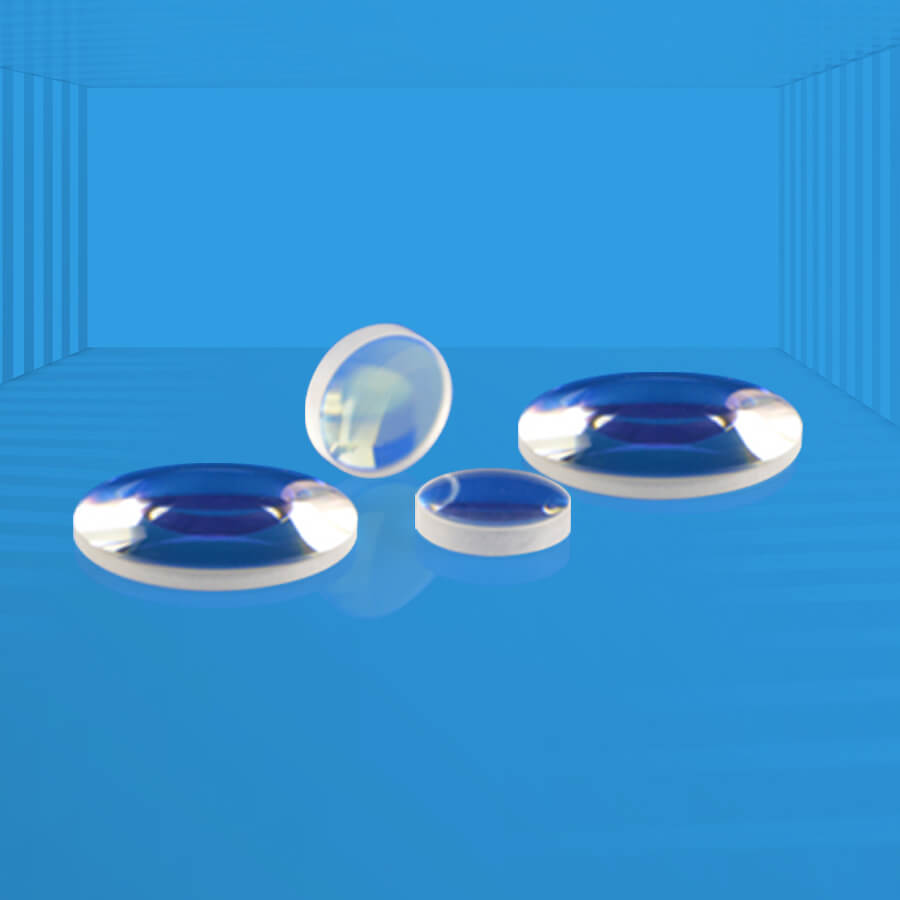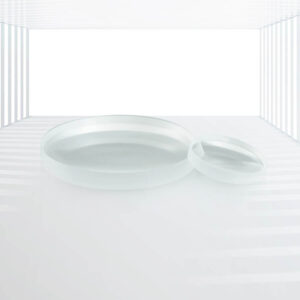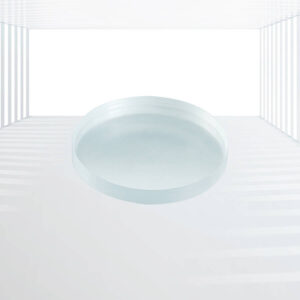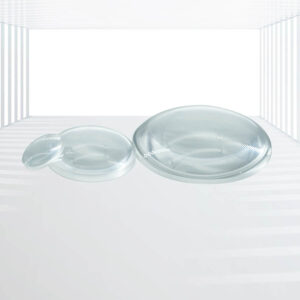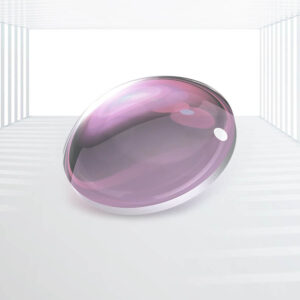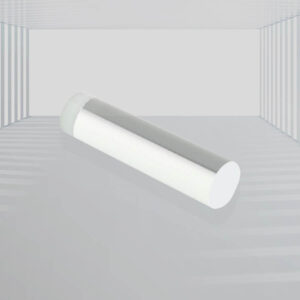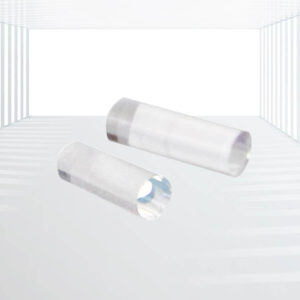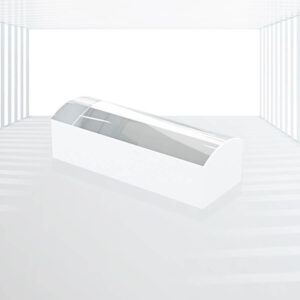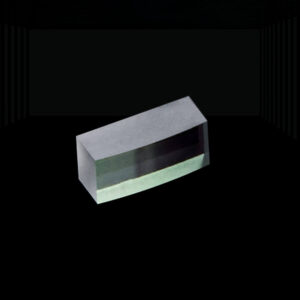Sapphire Lenses
Extremely hard and abrasion resistant: Sapphire has a hardness of nearly 9 on the Mohs scale, second only to diamond, so sapphire lenses have excellent scratch and wear resistance and maintain a surface finish in harsh environments.
High thermal conductivity: Sapphire has good thermal conductivity, which helps to quickly disperse heat inside the lens and prevent fluctuations in optical properties caused by temperature changes.
High Transmittance and Wide Spectral Range: Sapphire lenses have good transmittance in the ultraviolet (UV) to midwave infrared (MWIR) wavelength range, covering a wide spectral range and making them suitable for a wide range of optical applications.
Excellent chemical stability: Sapphire has excellent resistance to common chemical acids and bases, allowing it to be used in corrosive environments for long periods of time without damage.
Thin design: Due to its high hardness and structural strength, sapphire lenses can be designed to be thinner while maintaining sufficient mechanical strength and optical properties.
Applications: Laser technology, Infrared Optics, Aerospace, Medical Devices, Scientific research, etc.
Sapphire Lenses, also known as sapphire lenses, are precision optical components made of high-purity alumina (Al2O3) single crystals. Sapphire is widely used in the field of optics due to its excellent physical and chemical properties. Kingwin Optics, as a professional manufacturer of optical products, provides high-quality custom sapphire lenses to meet the needs of various complex and demanding applications.
Specifications:
| Lens Shape | Plano-convex, Plano-concave,
Double convex/concave, Ball/Half-ball, Meniscus lenses |
| Diameter Tolerance | +0.0/-0.2mm |
| Aperture | >90% |
| Centering Error | 3 arc minutes |
| Thickness Tolerance | +/-0.2mm |
| Parallelism | 1 arc minute |
| Surface Quality | Option: 60/40, 40/20 or 20/10 S/D |
| Materials | Optical grade single crystal sapphire |
| Coating | According to customer’s requirement |
Features:
- Extremely hard and abrasion resistant: Sapphire has a hardness of nearly 9 on the Mohs scale, second only to diamond, so sapphire lenses have excellent scratch and wear resistance and maintain a surface finish in harsh environments.
- High thermal conductivity: Sapphire has good thermal conductivity, which helps to quickly disperse heat inside the lens and prevent fluctuations in optical properties caused by temperature changes.
- High Transmittance and Wide Spectral Range: Sapphire lenses have good transmittance in the ultraviolet (UV) to midwave infrared (MWIR) wavelength range, covering a wide spectral range and making them suitable for a wide range of optical applications.
- Excellent chemical stability: Sapphire has excellent resistance to common chemical acids and bases, allowing it to be used in corrosive environments for long periods of time without damage.
- Thin design: Due to its high hardness and structural strength, sapphire lenses can be designed to be thinner while maintaining sufficient mechanical strength and optical properties.
Applications:
- Laser technology: Sapphire lenses are widely used in laser focusing, beam splitting, and transmission systems, and their high thermal conductivity and thermal shock resistance help ensure the stable operation of laser systems.
- Infrared Optics: In infrared imaging, detection, and guidance systems, sapphire lenses provide clear images while withstanding high temperatures and harsh environments.
- Aerospace: Sapphire lenses are used in aerospace applications such as windows, housings, and optoelectronic systems, where their excellent physical and chemical properties ensure reliability under extreme conditions.
- Medical Devices: In medical laser surgery and diagnostic equipment, the high light transmittance and chemical stability of sapphire lenses contribute to precise and safe operation.
- Scientific research: In the field of spectral analysis, laser physics and optical experiments, the high performance of sapphire lenses meets the strict requirements of scientific researchers for optical components.
Lenses are optical components utilized for focusing or diverging light. Sapphire Lenses are ideal for demanding applications (such as lasers) and harsh environments because of their extreme surface hardness, high thermal conduction, high dielectric constants, and resistance to common chemical acids and alkalis. Sapphire (Al2O3) is the second hardest crystal next to diamond, and because of their structural strength, sapphire crystal lenses can be made much thinner than other common materials. Sapphire has decent transmission rates from 0.15 to 5.5μm, which covers the ultraviolet (UV) to mid-wave infrared (MWIR) wavelength range.


